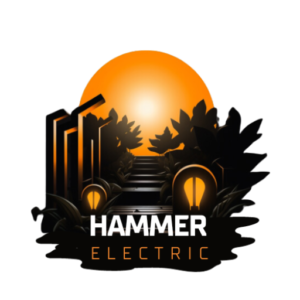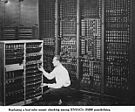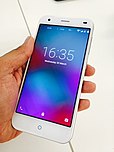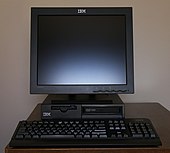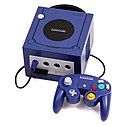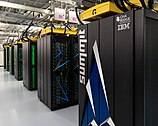Definition and Functionality of Computers
– A computer is a machine that can carry out arithmetic or logical operations automatically.
– Modern digital electronic computers can perform a wide range of tasks through programs.
– A computer system includes hardware, operating system, and peripheral equipment.
– Computers can be linked together to form a computer network or cluster.
– Computers are used as control systems in various industrial and consumer products.
Evolution and History of Computers
– Early computers were used for calculations and automation of tasks.
– Mechanical devices were developed during the Industrial Revolution.
– Digital electronic calculating machines were created during World War II.
– Semiconductor transistors and integrated circuit technologies led to the microcomputer revolution.
– Computers have been increasing in speed, power, and versatility since the late 20th century.
– Devices for computation have been used for thousands of years.
– Counting devices like tally sticks and abacus were early examples.
– The Antikythera mechanism, dating back to ancient Greece, is an early analog computer.
– Mechanical aids for calculation and measurement were constructed for astronomical and navigation use.
– Inventions like the astrolabe, sector, and slide rule contributed to the development of computing.
Early Mechanical Computers
– Slide rules were used for routine calculations, such as time and distance calculations on light aircraft.
– Pierre Jaquet-Droz built a mechanical doll that could write using internal wheels to produce different letters and messages.
– Giovanni Plana created a Perpetual Calendar machine that could predict the calendar for every year from 0 CE to 4000 CE.
– Sir William Thomson invented a tide-predicting machine that used pulleys and wires to calculate predicted tide levels.
– The differential analyzer, designed by Vannevar Bush, used wheel-and-disc mechanisms to solve differential equations.
– Charles Babbage invented the first mechanical computer in the early 19th century.
– He designed the analytical engine, which could be programmed using punched cards.
– The analytical engine had an arithmetic logic unit, control flow, and integrated memory.
– Babbage’s project faced political and financial difficulties and was eventually dissolved.
– His son, Henry Babbage, completed a simplified version of the computing unit in 1888.
– Leonardo Torres Quevedo wrote about Babbage’s efforts and designed an electromechanical machine capable of automatic calculations.
– Torres presented the Electromechanical Arithmometer in 1920, demonstrating the feasibility of an electromechanical analytical engine.
– The machine was controlled by a read-only program and introduced the idea of floating-point arithmetic.
Analog and Digital Computers
– Analog computers were widely used in the first half of the 20th century for scientific computing.
– Sir William Thomson invented the first modern analog computer, a tide-predicting machine.
– The differential analyzer, built by Hazen and Bush, solved differential equations using mechanical integrators.
– Analog computers lacked programmability and accuracy compared to digital computers.
– By the 1950s, digital electronic computers replaced analog computers in most applications.
– The United States Navy developed an electromechanical analog computer called the Torpedo Data Computer during World War II.
– Early digital computers were electromechanical and used electric switches and mechanical relays.
– The Z2, created by Konrad Zuse in 1939, was one of the earliest examples of an electromechanical relay computer.
– Electric tubes eventually replaced electromechanical components in digital computers.
– Konrad Zuse is credited with inventing the modern computer.
Turing Machines and Modern Computers
– Alan Turing proposed the concept of the modern computer in his 1936 paper.
– Turing machines are a central object of study in theory of computation.
– Stored-program computers include an instruction set and can store programs in memory.
– The Manchester Baby was the world’s first stored-program computer.
– The Manchester Mark 1, based on the Baby, became the first commercially available general-purpose computer.
– Turing machines are capable of computing anything that is computable.
– Modern computers are said to be Turing-complete.
– The stored program is a fundamental concept in Turing’s design.
– Von Neumann acknowledged the central concept of the modern computer in Turing’s paper.
– Turing machines have algorithm execution capability equivalent to a universal Turing machine.
– Alan Turing and John von Neumann played significant roles in the development of electronic computers.
– Turing’s 1945 report proposed the first electronic stored-program digital computer.
– The Manchester Baby, built in 1948, was the first working machine with all elements essential to a modern computer.
– The Manchester Mark 1 and Ferranti Mark 1 were based on the Baby and became commercially available computers.
– The development of electronic computers revolutionized computation and paved the way for modern computing technology. Source: https://en.wikipedia.org/wiki/Computer
A computer is a machine that can be programmed to carry out sequences of arithmetic or logical operations (computation) automatically. Modern digital electronic computers can perform generic sets of operations known as programs. These programs enable computers to perform a wide range of tasks. The term computer system may refer to a nominally complete computer that includes the hardware, operating system, software, and peripheral equipment needed and used for full operation; or to a group of computers that are linked and function together, such as a computer network or computer cluster.
- Early vacuum tube computer (ENIAC)
- Mainframe computer (IBM System 360)
- Desktop computer (IBM ThinkCentre S50 with monitor)
- Supercomputer (IBM Summit)
- Video game console (Nintendo GameCube)
- Smartphone (LYF Water 2)
A broad range of industrial and consumer products use computers as control systems. Simple special-purpose devices like microwave ovens and remote controls are included, as are factory devices like industrial robots and computer-aided design, as well as general-purpose devices such as personal computers and mobile devices such as smartphones. Computers power the Internet, which links billions of computers and users.
Early computers were meant to be used only for calculations. Simple manual instruments like the abacus have aided people in doing calculations since ancient times. Early in the Industrial Revolution, some mechanical devices were built to automate long, tedious tasks, such as guiding patterns for looms. More sophisticated electrical machines did specialized analog calculations in the early 20th century. The first digital electronic calculating machines were developed during World War II, both electromechanical and using thermionic valves. The first semiconductor transistors in the late 1940s were followed by the silicon-based MOSFET (MOS transistor) and monolithic integrated circuit chip technologies in the late 1950s, leading to the microprocessor and the microcomputer revolution in the 1970s. The speed, power and versatility of computers have been increasing dramatically ever since then, with transistor counts increasing at a rapid pace (Moore's law noted that counts doubled every two years), leading to the Digital Revolution during the late 20th to early 21st centuries.
Conventionally, a modern computer consists of at least one processing element, typically a central processing unit (CPU) in the form of a microprocessor, together with some type of computer memory, typically semiconductor memory chips. The processing element carries out arithmetic and logical operations, and a sequencing and control unit can change the order of operations in response to stored information. Peripheral devices include input devices (keyboards, mice, joystick, etc.), output devices (monitor screens, printers, etc.), and input/output devices that perform both functions (e.g., the 2000s-era touchscreen). Peripheral devices allow information to be retrieved from an external source and they enable the result of operations to be saved and retrieved.
